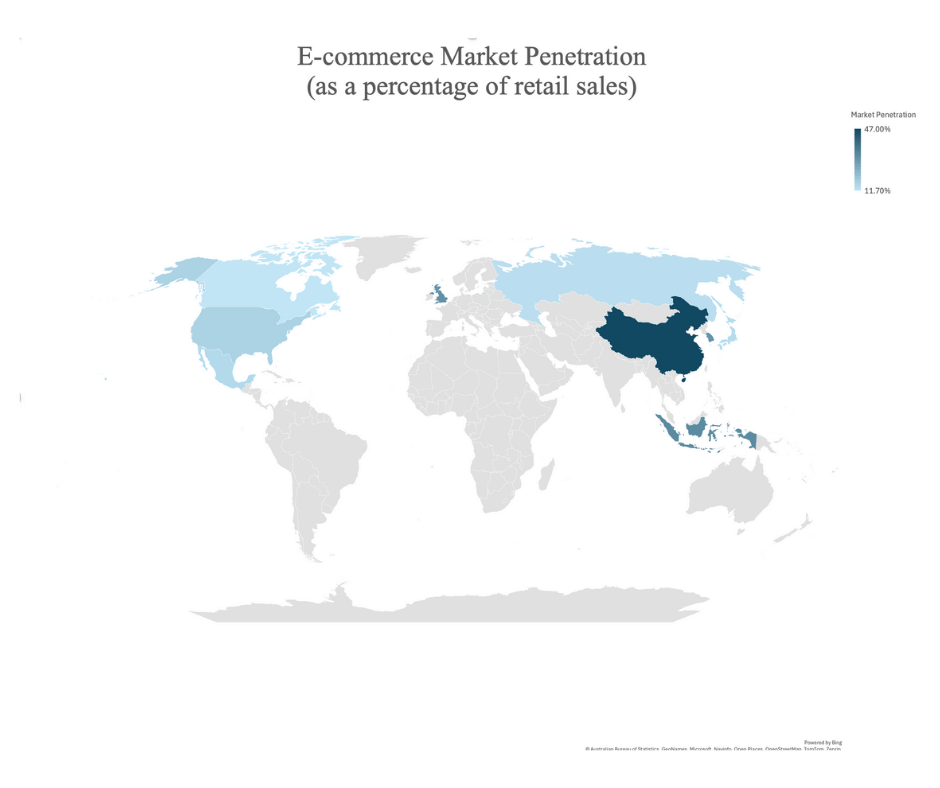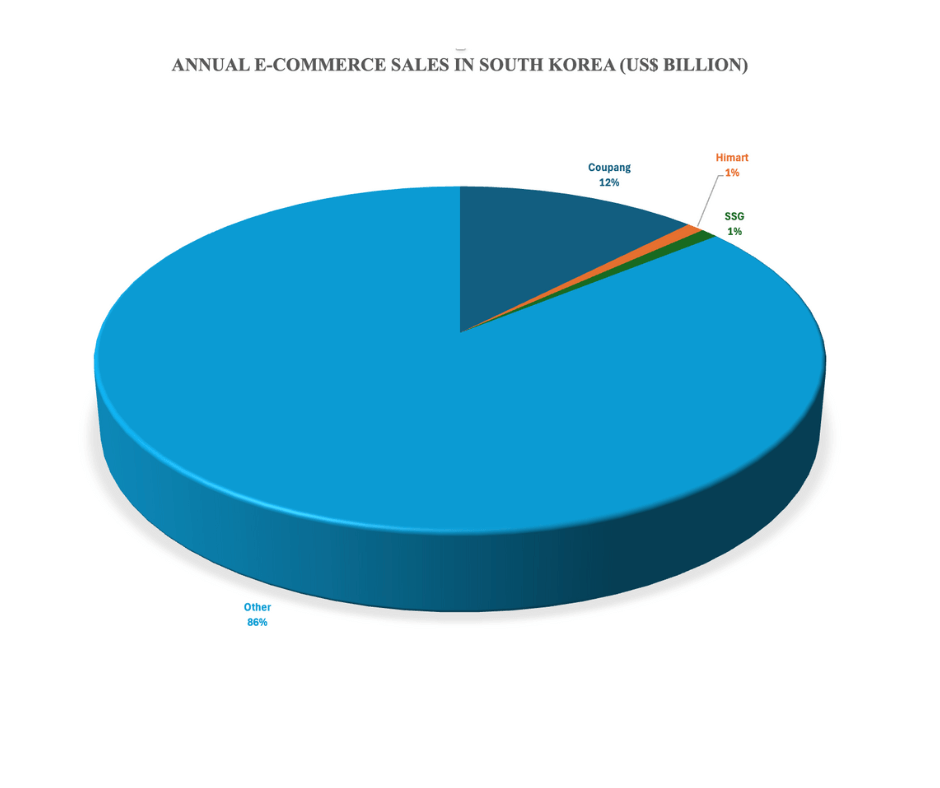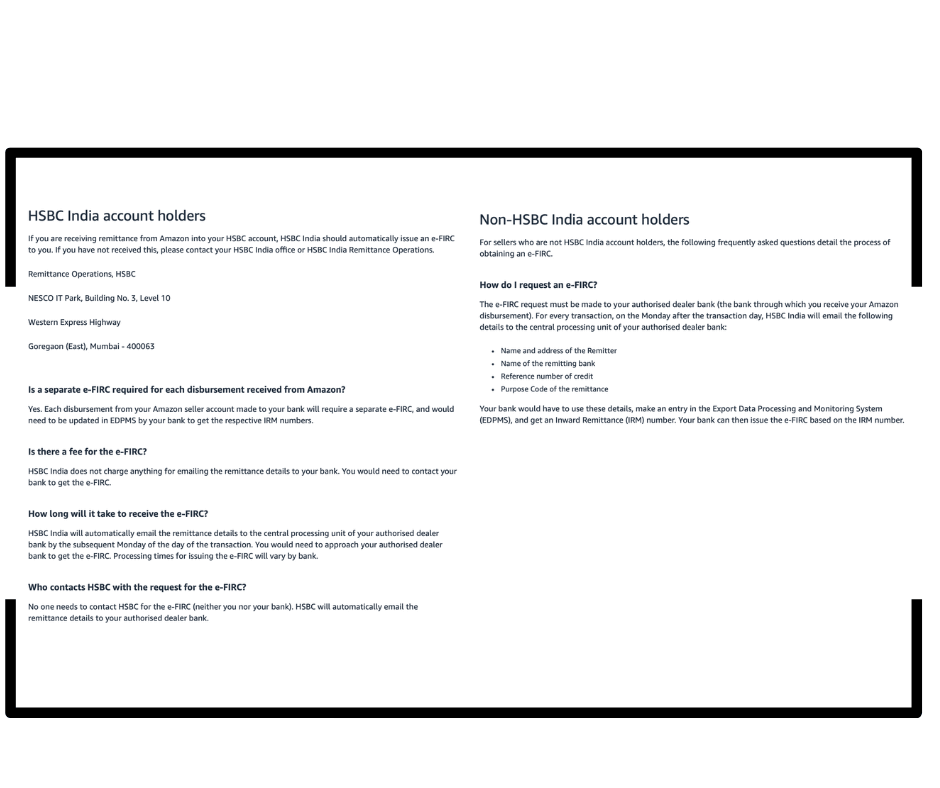
Ever thought about expanding internationally? How about selling your products worldwide with FBA services? With 23 marketplaces and counting, Amazon is the place to be if you want your products to reach more buyers. But don’t jump into this blindly. Here’s what you need to know…
If you’re considering an international expansion on Amazon, there’s no time like the present. Amazon boasts a portfolio of over 100 mergers, a growing drone delivery network, and innovative AI tools like Rufus, List Your Products, and Fit Insights. This e-commerce behemoth is going nowhere but up.
It’s not without its competition, though. For instance, discount app Temu has taken Western markets by storm, despite being eerily similar to Aliexpress. But even with apps like these popping up, Statista forecasts that Amazon will outperform Alibaba by 2027. So, now is the time to go global.
If you sell on Amazon’s 23 venues, you can already access some of the world’s fastest growing e-commerce countries, such as Mexico, India, and Brazil. But note that many of the fastest growing e-commerce markets in Southeast Asia don’t have a local Amazon platform.

Still, you could try to reach customers who don’t have a local Amazon website too. Why? People from countries like Indonesia and South Korea shop on Amazon too. And they live in countries where online sales make up a huge share of their retail sales. As shown below, Indonesia and South Korea, for instance, are in the top 10 countries by market penetration with market shares of over 30%.

As MobiLoud points out, Amazon is already present in 8 of the 10 countries with the largest e-commerce sales. But there are also countries without an Amazon marketplace of their own, such as South Korea and Indonesia, that outshine France and Canada in terms of online sales.
In Indonesia, for instance, where last year’s e-commerce sales totalled $97.14 billion, according to MobiLoud, there is ample space for a seller wanting to expand internationally. If Amazon were to launch here, its main competitors would be Blibli and Orami, now that JD.com no longer operates here.
In South Korea, e-commerce sales rose to $147.43 billion in 2023, according to the same source. Anyone wishing to launch an online retail business here would contend with 3 major e-commerce platforms: Coupang, Himart, and SSG. Together, they brought in less than $21 billion last year. Here, again, there is untapped potential for foreign merchants, especially if Amazon should decide to launch locally.

For the time being, India is the only country on the top 10 e-commerce growth chart above that sellers in the USA and Mexico can expand to. As the world’s most populous democracy, it also attracts a great deal of foreign direct investment (FDI), according to Invest India.
To set up shop on Amazon.in, simply sign up for a seller account here, stating your company name, bank account and tax details. Amazon India is currently open only to sellers who own a local business. Luckily, there are workarounds for those who don’t operate locally.
A GST number is required for those selling taxable goods, with different codes for every state. Most products sold on Amazon.in are VAT taxable, while others are exempt. Check tax requirements and tax rates for different jurisdictions before starting a business, as they may differ.
For instance, precious stones and metal fall into the tier 1 category with a VAT rate of 1% to 2%. Tier 2 tax is levied on cotton, coffee, medicines and other essentials at a rate of 5% or thereabouts, depending on the state. The sale of all other products generally incurs a tax of 12.5% to 20%.
At the moment, Amazon India’s third-party sellers are only allowed to deliver to addresses in India. However, customers can use intermediaries like MyXBorder to have products they ordered on Amazon India delivered to their doorstep.
Also, sellers on Amazon.in are allowed to export and receive payment from abroad. Still, if they don’t bank with HSBC, they need to contact their dealer bank for a Foreign Inward Remittance Certificate (FIRC). Moreover, thanks to the Global Selling Program, many Indian sellers can now list in North America, Europe, Australia, and Japan.

We hope we’ve given you some food for thought and brought you a step closer to fulfilling your goals for growth and international expansion on Amazon. If you feel that your Amazon expansion will open up your business model to a wider customer base, be sure to read up about FBA, Amazon’s end-to-end logistics service, on our blog.

Melanie takes an active interest in all things Amazon. She keeps an eye on the latest developments and keeps Amazon sellers up to speed.






3 Responses
Nice content … Keep writing and there are more service like it. Try to mention all. Thank you
Thank you very much for the feedback! We will cover all in the following articles!
International expansion on Amazon presents opportunities and challenges. Understanding local competition, market dynamics, and consumer preferences is crucial for success. Strategic planning can help businesses thrive in the global marketplace.